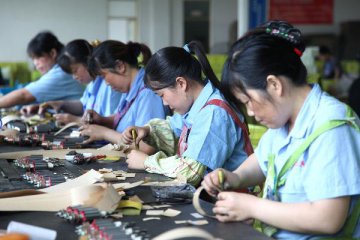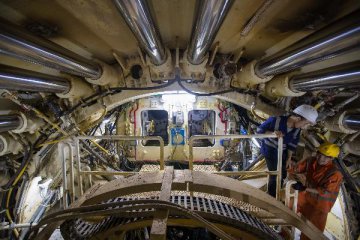
As the macroeconomic data beat the expectation, insiders are more concerned about the performance in the second quarter.
Based on the statistics released by the National Bureau of Statistics (NBS) on May 15, some economic indicators declined in April. Besides, the Chinese manufacturing and non-manufacturing PMI both declined in April, which will arises discussions over the trend of the economic growth of China among economists.
The disputes over the “L-shaped” and “U-shaped” economic growth in China has suspended temporarily. But insiders have different judgments on whether Chins has reached the “horizontal level” of the “L-shaped” growth or has not reached the end of the “vertical level”. All these are out of the concerns over the slowing down in China’s economic growth.
The declining economic indicators in April will make many people nervous. There are conflicts and issued in China’s economic operation, but we should treat them rationally. For example, the conflict between the excessive capacities and the upgrading of demand structure, the insufficient endogenous drivers to economic growth, accumulated financial risks and some new issues should catch close attention.
It should not be ignored that China’s economic growth has become more stable recently. The fluctuations between quarters and months are smooth. The declining of some economic indicators in April is within the reasonable range.
It is supported by the stable economic growth. For example, the industrial added value of enterprises above the designated size increased 6.5 percent year on year in April, maintaining a rapid growth of over 6 percent and representing a high level since 2015. The service industry production index hiked 8.1 percent year on year, which has been maintaining a high growth of over 8 percent since the beginning of this year.
Meanwhile, employment situation, prices of commodities and balance of international payments are stable. Economic growth, prices of commodities, employment situation and balance of international payments are four major indicators measuring operation of macro-economy. Based on performance of these four indicators in April, China’s economy continues to run at a rational range with keynote of stability unchanged.
China’s economy also achieved significant progress in April. Cutting overcapacity, destocking, deleveraging, lowering costs and improving weak links were promoted continuously. Cutting overcapacity in rolled steel and coal fields finished 63.4 percent and 46 percent of annual target respectively. More investment was made to improve weak links. Structural adjustment was advanced. Transformation and upgrading saw better momentum. The trend of economy turning better didn’t change.
All these have strengthened confidence in China’s economy. Although various signs showed that China’s economy is far away from relaxing, we should be rational and objective to judge China’s economy. The Political Bureau of the Communist Party of China (CPC) Central Committee viewed the current economic situation on April 25. It highly affirmed the good opening of economic development. But as it is a tough task for economic structural adjustment with many challenges, the government should make sure that supply-side structural reform should be deepened. Therefore, cutting overcapacity, destocking, deleveraging, lowering costs and improving weak links should be firmly promoted and economic transformation and upgrading should be accelerated.
The stable operation of China’s economy in the first four month of this year provided a good opening for China’s economy in 2017, but people’s worry about China’s economic slowdown won’t disappear accordingly. However, the stable economic growth facilitates regulators to deleverage, prevent risks and curb bubbles and creates easy environment for the following regulations and reforms.
Translated by Star Zhang
























Latest comments